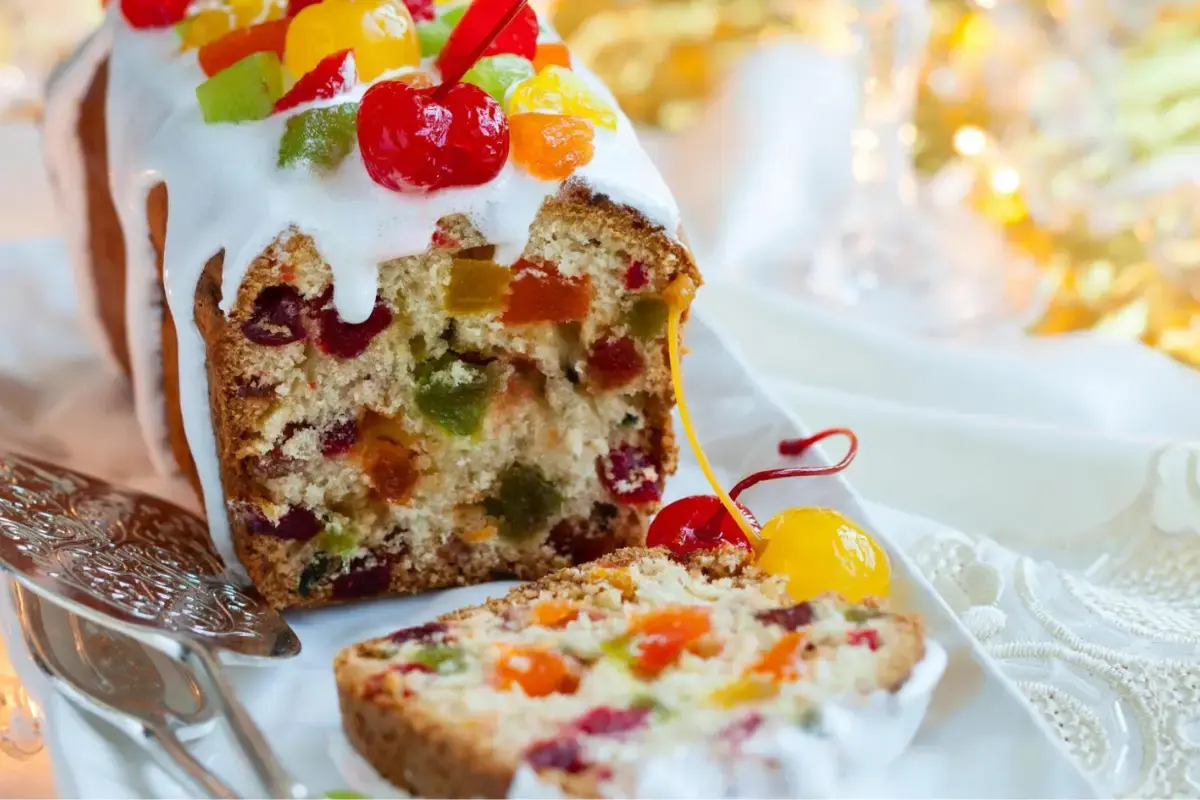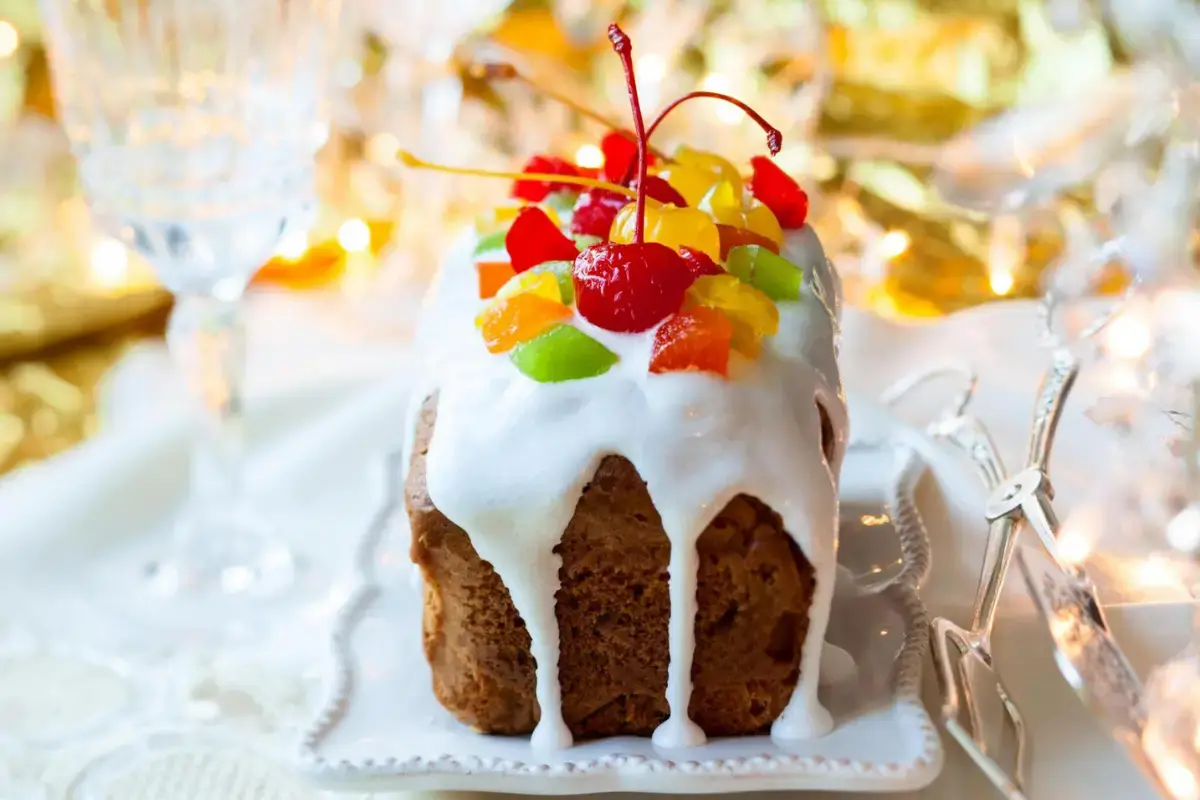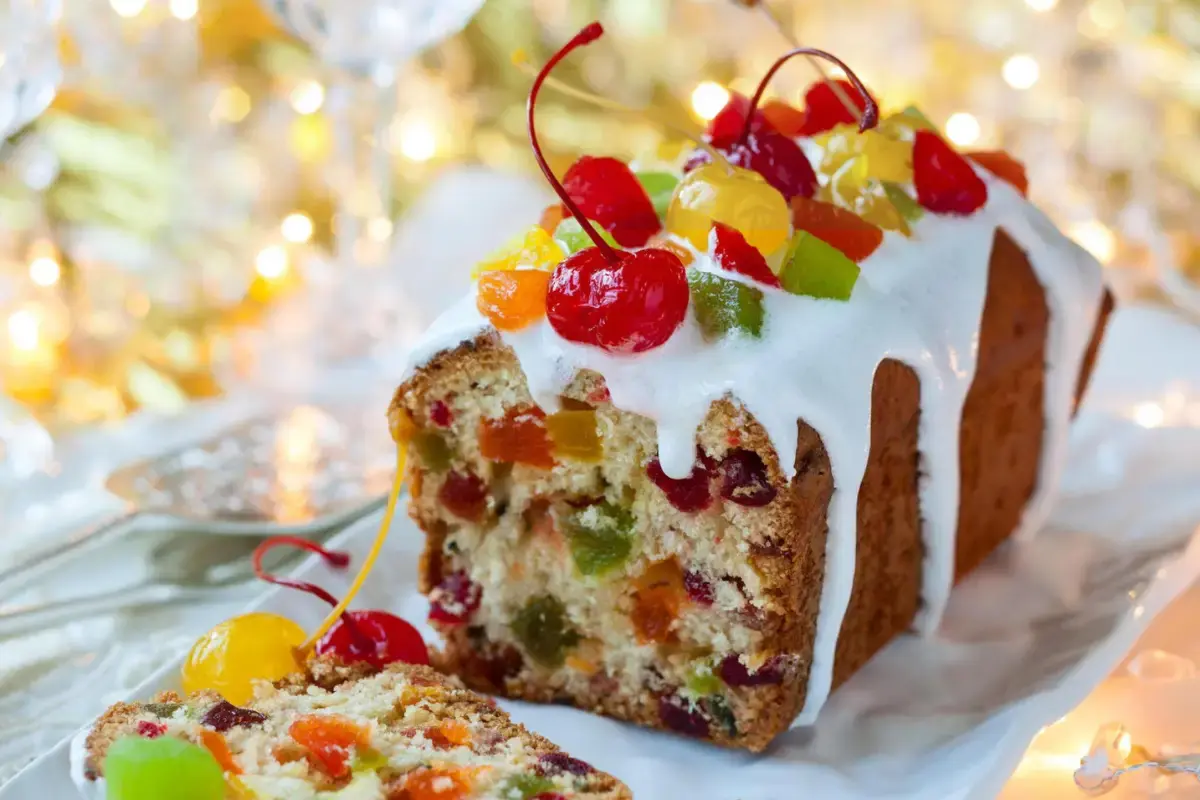In the realm of holiday treats, few subjects stir up as much passionate debate as the humble fruitcake. Often maligned, sometimes adored, but always controversial, this traditional dessert carries with it tales of holiday cheer and culinary dread. But what’s the real story behind fruitcake? Is it possible that beneath its notorious reputation lies a misunderstood delicacy waiting to be rediscovered? In this deep dive, we’ll embark on a quest to uncover the truth about fruitcake, exploring its history, dissecting its composition, and even conducting our own taste test. So, buckle up and prepare for a journey that might just change your mind about this holiday classic.
Part 1: The Great Fruitcake Debate
Understanding Fruitcake’s Polarizing Reputation
Ah, fruitcake. Just the mention of it can evoke a chorus of groans and eye rolls, or, in rare cases, nostalgic smiles. It’s a dessert that’s become the butt of many a holiday joke. Yet, despite its notorious status, fruitcake has clung to its place at the holiday table with the tenacity of, well, candied fruit in a dense cake. But why? What’s behind this love-it-or-hate-it divide?
For starters, fruitcake is often criticized for its dry texture and the peculiar choice of candied fruits and nuts that seem to have come straight out of a Dickensian novel. However, proponents argue that a well-made fruitcake is moist, rich, and a delightful blend of flavors that embody the spirit of the holidays. It’s a classic case of misunderstood potential—a culinary underdog, if you will.
To further explore the world of baking and holiday treats, consider diving into our comprehensive guides on mastering chicken pot pie sauce, where we unravel the secrets to creating the perfect complement to your holiday meals. This exploration into the nuances of sauce-making can provide a delightful contrast to the dense sweetness of fruitcake, offering a savory counterpoint that enriches the holiday dining experience.
Stay tuned as we continue our journey through the layers of fruitcake’s history, ingredients, and the ultimate taste test that might just reveal the hidden charm of this festive dessert.
The Objective: Finding a Good Fruitcake
So, here’s the million-dollar question: Can a fruitcake actually be good? To find out, we’re not just relying on hearsay. Instead, we’re rolling up our sleeves and diving headfirst into a fruitcake exploration. We’ll sift through its cultural perceptions, dissect its ingredients, and even put our taste buds on the line with a comprehensive taste test. From commercial brands to homemade recipes, we’re leaving no stone unturned.
Our mission is clear: to see if fruitcake can redeem itself and perhaps even find a place in the hearts (and stomachs) of the skeptics. Will we uncover hidden gems among the dense, fruit-laden loaves, or will the search confirm fruitcake’s status as the holiday season’s most infamous dessert? Only time and taste will tell.
So, as we embark on this flavorful journey, keep an open mind. Who knows? By the end, you might find yourself reaching for a slice of fruitcake, ready to give it another chance. Or, at the very least, you’ll have a heartfelt story to share at your next holiday gathering. Let the great fruitcake debate begin!
A Slice of History
Origins and Historical Significance
Peeling back the layers of fruitcake’s history reveals its ancient roots. Imagine ancient Romans mixing pomegranate seeds, pine nuts, and raisins into barley mash. As we leap into the Middle Ages, variations of fruitcake pop up across Europe. Each version boasts a unique blend of fruits, nuts, and spices, sweetened with honey for preservation.
Fruitcake has symbolized prosperity and abundance through the ages. Celebrations and soldiers on campaigns savored it as a high-energy food. Its luxurious ingredients, like spices and dried fruits, marked it as a treat for the affluent and special occasions.
How Fruitcake Became a Holiday Staple
So, how did this rich dessert weave itself into the fabric of holiday traditions? The story takes us to Victorian England, where the Christmas cake, a close cousin of the fruitcake, became a family affair. Families would gather five weeks before Christmas to mix the cake and make wishes, a ritual known as “Stir-up Sunday.” This tradition firmly linked fruitcake with holiday cheer.
The cake’s ability to be made in advance, thanks to its alcohol content, made it perfect for the Christmas season. As it spread across the British Empire, fruitcake adapted to local ingredients and traditions. In America, it became a cherished holiday tradition, with each family adding their own twist to the classic recipe.
From ancient times to modern holiday tables, the journey of fruitcake is a testament to its lasting appeal. Despite its divisive reputation today, the history of fruitcake reminds us of its deep cultural and historical significance. It’s a fascinating slice of history that continues to evolve and captivate.
In Search of the Best Fruitcake
Methodology and Selection Criteria
Embarking on this quest, we first laid down our battle plan. To ensure fairness and objectivity, we established clear criteria. Firstly, we sought a mix of commercial and homemade fruitcakes, aiming for a variety in price, ingredients, and reputation. Secondly, the fruitcakes had to be dark, without marzipan icing, to maintain consistency in our taste test. Lastly, we decided not to let the promise of big nuts sway our judgment, focusing instead on flavor, texture, and overall enjoyment.
The Contenders: Commercial vs. Homemade
Our lineup was as diverse as it was intriguing. On the commercial front, we had everything from budget-friendly options at local supermarkets to high-end choices promising the ultimate fruitcake experience. Meanwhile, the homemade category featured recipes passed down through generations, including one with a secret ingredient: mashed potatoes. Yes, you read that right. Mashed potatoes. This eclectic mix set the stage for a showdown that was as much about tradition as it was about taste.
Tasting Notes and Surprises
The taste test was a rollercoaster of flavors and emotions. The commercial fruitcakes varied widely, from the overly sweet and candied to the surprisingly moist and flavorful. One budget-friendly option was surprisingly decent, challenging the notion that price dictates quality. However, some high-end fruitcakes left us underwhelmed, proving that a hefty price tag doesn’t always guarantee a superior taste.
The homemade fruitcakes, however, were the stars of the show. The mashed potato-infused cake was a revelation, offering a moist texture and depth of flavor that none of the commercial options could match. It was a testament to the magic that can happen in a home kitchen with a little creativity and a lot of love.
But the biggest surprise came from our fellow taster, Stephen, and his fruitcake, which followed a recipe from none other than Mary Berry. It struck the perfect balance between fruit and cake, with a hint of alcohol to elevate the flavors. It was a reminder that sometimes the best things in life are those made with care and shared with friends.
In the end, the experiment was more than just a search for a good fruitcake; it was a journey through flavors, traditions, and the unexpected joy of discovering something new. While the commercial fruitcakes had their moments, it was the homemade versions that truly captured our hearts. They reminded us that, in the world of fruitcake, the secret ingredient is always love.
So, is there such a thing as a good fruitcake? Absolutely. And sometimes, it’s closer to home than you might think. Whether it’s a family recipe passed down through generations or a new tradition you’re starting, the best fruitcake is the one that brings joy and warmth to your holiday celebrations.
Ingredients and Techniques
Key Ingredients for a Moist and Flavorful Cake
Diving into the heart of a good fruitcake, it’s clear that the choice of ingredients plays a pivotal role. First and foremost, quality dried fruits and nuts form the backbone of any stellar fruitcake. Opting for a variety of fruits like cherries, apricots, raisins, and citrus peels, soaked in rum or brandy overnight, can infuse your cake with a rich, complex flavor profile. The alcohol not only adds depth but also acts as a preservative, allowing the cake to mature and develop its taste over time.
Butter and brown sugar are next on the list, providing moisture and a caramel-like sweetness that complements the fruitiness. Eggs bind the mixture, while spices such as cinnamon, nutmeg, and allspice bring warmth and a hint of mystery. Flour, though used sparingly, is crucial for structure, ensuring the cake can support the hefty amount of add-ins without collapsing.
A secret ingredient often hailed by fruitcake aficionados is molasses, or treacle. This thick, dark syrup adds moisture, color, and a unique bittersweet flavor that elevates the cake from good to unforgettable. Lastly, a splash of vanilla extract or almond essence can round out the flavors, adding a subtle aroma that ties everything together beautifully.
Common Pitfalls in Fruitcake Preparation
However, even with the best ingredients, fruitcake preparation is fraught with potential pitfalls. One of the most common mistakes is overbaking, which can lead to a dry, crumbly texture that’s far from the moist and dense ideal. Keeping a vigilant eye on the oven and testing for doneness with a skewer can help avoid this disaster.
Another pitfall is the improper balance of fruits, nuts, and batter. Too much of the add-ins can make the cake overly dense and difficult to slice, while too little can result in a bland, cakey texture lacking the signature fruitcake charm. Achieving the perfect ratio requires patience and experimentation.
Lastly, the temptation to skip the aging process can lead to a fruitcake that’s harsh in alcohol flavor or lacking in depth. Allowing the cake to rest, wrapped in alcohol-soaked linen, for at least a few weeks (or even months) can transform it into a moist, flavorful delight that’s well worth the wait.
In essence, crafting a good fruitcake is an art that balances quality ingredients with careful preparation techniques. Avoiding common pitfalls and embracing the aging process can result in a cake that’s not just edible but celebrated—a true holiday masterpiece.
The Verdict
Commercial vs. Homemade: The Results
After a journey filled with anticipation, taste tests, and plenty of fruitcake, we’ve arrived at a conclusion. Can there be a good fruitcake? The answer is a resounding yes. However, the path to fruitcake redemption is not paved with store-bought options but rather with the love and care of homemade recipes.
Commercial fruitcakes, while convenient, often fell short of our expectations. Many suffered from a lack of balance—either too sweet or too dry—and lacked the personal touch that makes fruitcake special. Despite this, a few commercial contenders showed promise, offering a glimpse into the potential for a good fruitcake that’s accessible to those not inclined to bake.
The Winner(s) and What Sets Them Apart
The homemade fruitcakes, on the other hand, were in a league of their own. Each slice was a testament to the power of quality ingredients, proper technique, and, most importantly, the magic of personal touch. The winner among them, Stephen’s fruitcake, inspired by Mary Berry’s recipe, stood out for its perfect balance of fruit and cake, moist texture, and a hint of alcohol that enhanced rather than overpowered.
What set the homemade versions apart was not just their superior taste and texture but also the stories they carried. Each homemade fruitcake was a slice of tradition, a piece of history, and a labor of love. They reminded us that good fruitcake is not just about the ingredients or the method but also about the memories and emotions it evokes.
In conclusion, good fruitcake does exist, and it’s closer to home than you might think. Whether following a cherished family recipe or experimenting with your own, the secret to a good fruitcake lies in the joy of making and sharing it. This holiday season, we invite you to create your own verdict by diving into the world of fruitcake-making. Who knows? You might just find yourself a convert.
Fruitcake FAQs
Why is fruitcake so hated?
Fruitcake’s bad rap mainly stems from mass-produced versions that skimp on quality ingredients, resulting in a cake that’s dry, overly sweet, or laden with artificial-tasting candied fruits. These negative experiences have perpetuated the stereotype of fruitcake as a holiday punchline rather than a treat to be savored.
Can fruitcake be good?
Absolutely! A good fruitcake is all about balance and quality. With the right mix of moist fruits, nuts, and a flavorful batter, fruitcake can be a delightful holiday dessert. Homemade fruitcakes, in particular, have the potential to convert skeptics with their rich flavors and tender textures, proving that this traditional treat can indeed be delicious.
How do I store fruitcake?
Proper storage is key to maintaining the quality of fruitcake. Wrap the cake in cheesecloth soaked in your alcohol of choice (brandy or rum are popular options), then in foil, and store it in an airtight container. Keep it in a cool, dark place, and periodically re-soak the cheesecloth with alcohol to keep the cake moist and flavorful. This method not only preserves the cake but can also improve its taste over time.
Is fruitcake better with age?
Yes, fruitcake is one of those rare treats that can get better with age. The aging process allows the flavors to meld and deepen, resulting in a richer taste experience. A well-aged fruitcake, kept for weeks or even months, develops a complexity of flavor that’s hard to achieve in freshly baked goods. However, it’s crucial to store it correctly to prevent spoilage and ensure it ages gracefully.
Conclusion
The Future of Fruitcake
Changing Perceptions and New Traditions
As we wrap up our journey into the world of fruitcake, it’s clear that this traditional holiday dessert is ripe for a renaissance. By shedding light on the art of fruitcake making and debunking long-held stereotypes, we pave the way for new traditions and renewed appreciation. The future of fruitcake looks bright, with more and more people willing to give this misunderstood treat a second chance. As we embrace the diversity of recipes and the joy of homemade baking, fruitcake stands ready to reclaim its place at the holiday table, celebrated not just for its rich history but for its delicious potential.
For those inspired to embark on their own fruitcake-making adventure, consider starting with Mary Berry’s Classic Fruit Cake Recipe, a tried-and-true guide that promises to deliver all the richness and depth this dessert can offer. Mary Berry, a revered figure in the baking world, provides a foundation that’s both accessible for beginners and satisfying for seasoned bakers.
Moreover, for a deeper dive into the cultural and culinary journey of fruitcake, Insights from a Fruitcake Taste Test on CBC Radio offers fascinating perspectives on this divisive dessert. This interview explores the nuances of fruitcake’s reputation and its potential for redemption, providing listeners with a comprehensive understanding of its place in holiday traditions.
Lastly, for those seeking a modern twist on the classic, A Traditional Moist Fruit Cake Recipe from A Beautiful Plate introduces innovative techniques and ingredients to enhance the moisture and flavor profile of the cake. This recipe is perfect for those looking to impress guests with a fruitcake that defies expectations and showcases the dessert’s potential for greatness.
By exploring these resources and incorporating their insights into your baking practice, you’re not just making a dessert; you’re participating in the revival of a holiday classic. Fruitcake, with its rich tapestry of flavors and history, offers a unique opportunity to create new traditions that honor the past while looking forward to a future filled with delicious possibilities.



